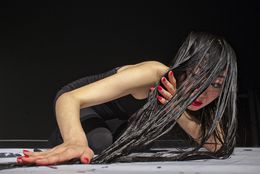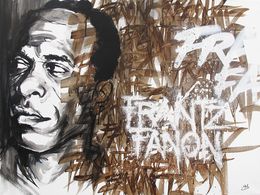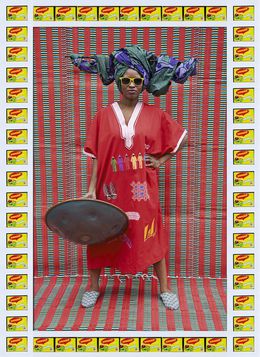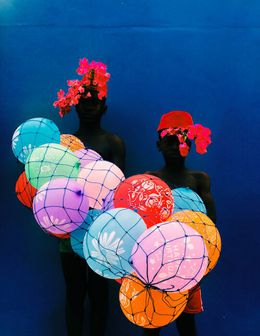
Meet Kyle Ring
Creator and curator of @in.hair.itance

Kyle Ring
Dr. Kyle Ring is the creator of the growing Instagram account @in.hair.itance, which is steadily approaching 100,000 followers. Their aim? To celebrate diversity of hair in non-white cultures and promote the stories of those who have had their histories systemically erased. Ring discusses with us their motivations behind their Instagram account, the interconnection between hair, race and art, and how visual platforms create a space for these kinds of dialogues.
1. Hi Kyle! You're a curator and creator of the popular Instagram account @in.hair.itance. Can you tell us a little bit more about yourself and your account?
Hi Artsper! I am from London, UK where I work as a doctor in HIV and Genitourinary Medicine. I am really passionate about tackling inequality in all forms whether related to healthcare, media representation or even basic human rights. I am currently undertaking a Masters in Postcolonial Studies at SOAS to further my study in this area and have recently been appointed as a Trustee for the LGBTQ+ charity Stonewall. My Instagram account @in.hair.itance is all about reframing the historical narrative for people of color when it comes to hair and hairstyling. The majority of media platforms center northern European or “white" hair-types, creating a false narrative that this is the “norm." Anything that doesn't fit into this becomes “othered" and effectively erased. My page seeks to celebrate what is actually a rich, diverse history of hair culture across the globe which encompasses complex social, spiritual and political aspects of our history.
2. Extending on the last question, what led you to start curating such an account?
My page was really born out of a void. During my research I came across old photographs online and vintage postcards with similar images which were created during the colonial era by European photographers who traveled to the edges of the Empire in search of the exotic. These images, which focused on local “types" or people, often focused on aspects of their physicality such as hair, facial features or even their nakedness in an attempt to highlight their so called “primitivism". However despite the original intention behind their creation, there was a beauty to many of the images and a record of our history that felt lost. I researched the images and the history behind the hairstyles and their meaning and decided to share them on my page. Our ancestors were creative, innovative and resourceful and my page attempts to highlight just that. My page effectively rescues these historical images from obscurity and their original racist context and reframes them in a way that restores dignity to the subject of the photo whilst inspiring and educating people today.
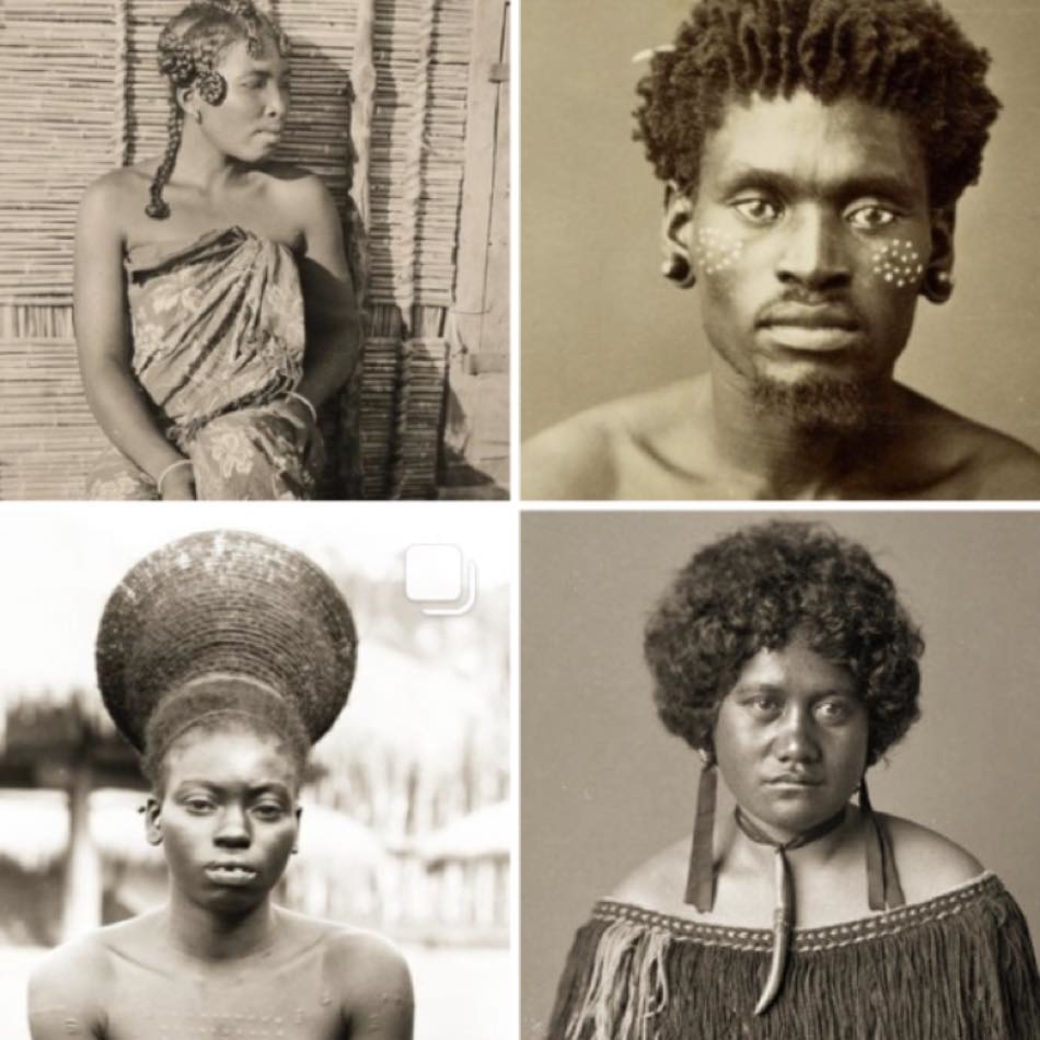
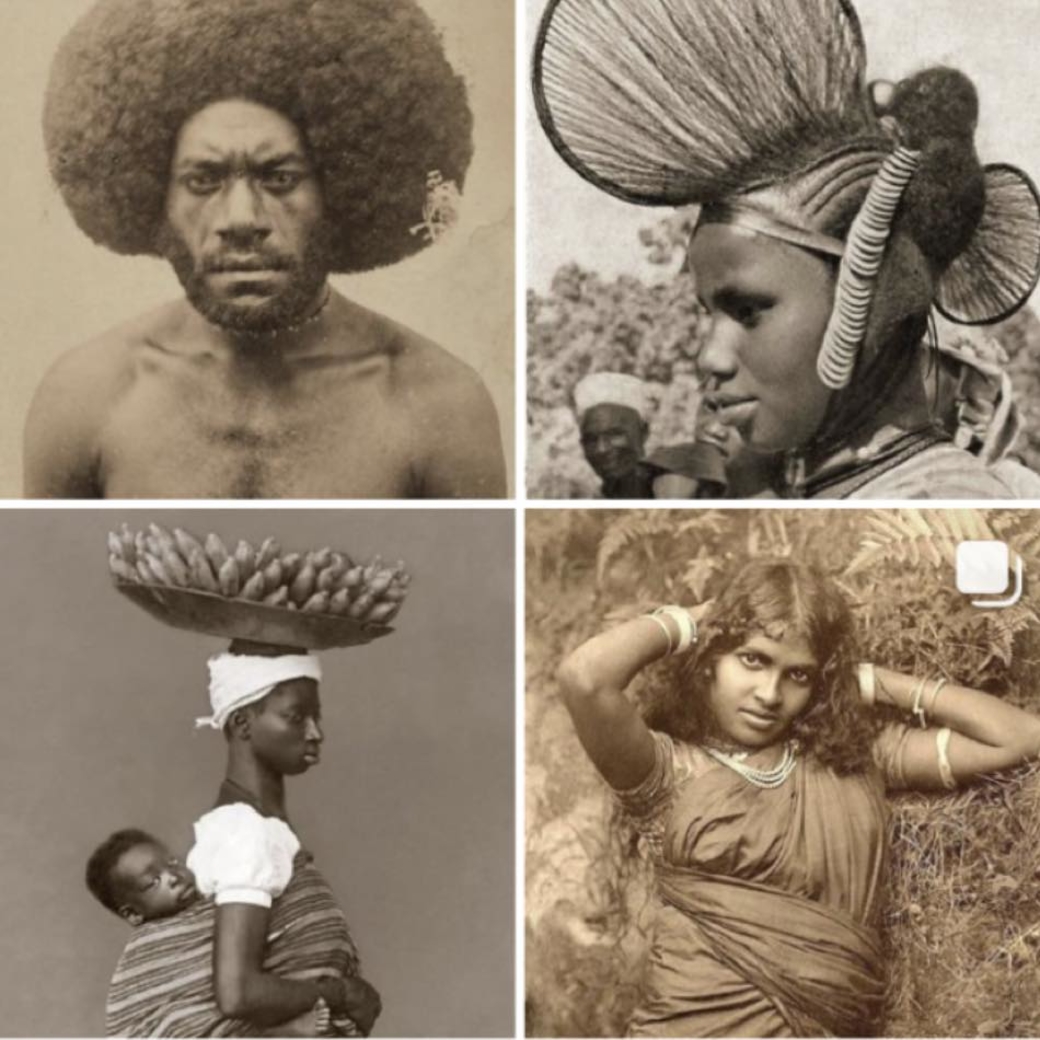
Kyle Ring's Instagram, @in.hair.itance, celebrates the diversity of hair in non-white communities
3. Can you speak to where you see the intersection between hair, race and art?
Hair is such a central part to many people's identities. It communicates to others about multiple aspects of who we are: our ethnicities or racial groups, our religious associations or spiritual beliefs, even our age or position in society. Many artists have been inspired by their hair when they create art. Beyond Frida Kahlo's historic eyebrows (which in itself were a challenge to Western portrayals of femininity and a sign of ethnic pride) she often wore her hair in braids laced with silk ribbon, a traditional Mexican style that predates Spanish colonization. Hair can be a powerful symbol of defiance and ethnic pride - the iconic Afro defined Black Power in the 1970s and is still regularly featured in artworks today as a nod to the influential movement as well as a way to champion natural hair. Artists often infuse multiple aspects of themselves and their identities into their artworks so it is not surprising that race and hair often come together in such a powerful way in art.
4. You typically focus on historical imagery while curating...is that reflective of your own art collection? What are your favorite pieces of art in your home?
I love historical imagery but my main interest artistically focuses on portraiture and how specific portraits utilise pose, dress, background and associated objects to communicate to the viewer about aspects of their identity or personality. One of my favorite art pieces is a print of a portrait from Cincinnati-based artist Gee Horton who draws in a hyperrealist style using charcoal and graphite. His portraits center Blackness and afro-textured hair in a really beautiful way. I also have a collection of wooden masks from different countries I have visited including India, South Africa and Hawaii. I love reflecting on the ways in which our ancestors experienced their own identities and were able to take on other traits and personas through rituals and ceremonies that were an integral part of their societies.

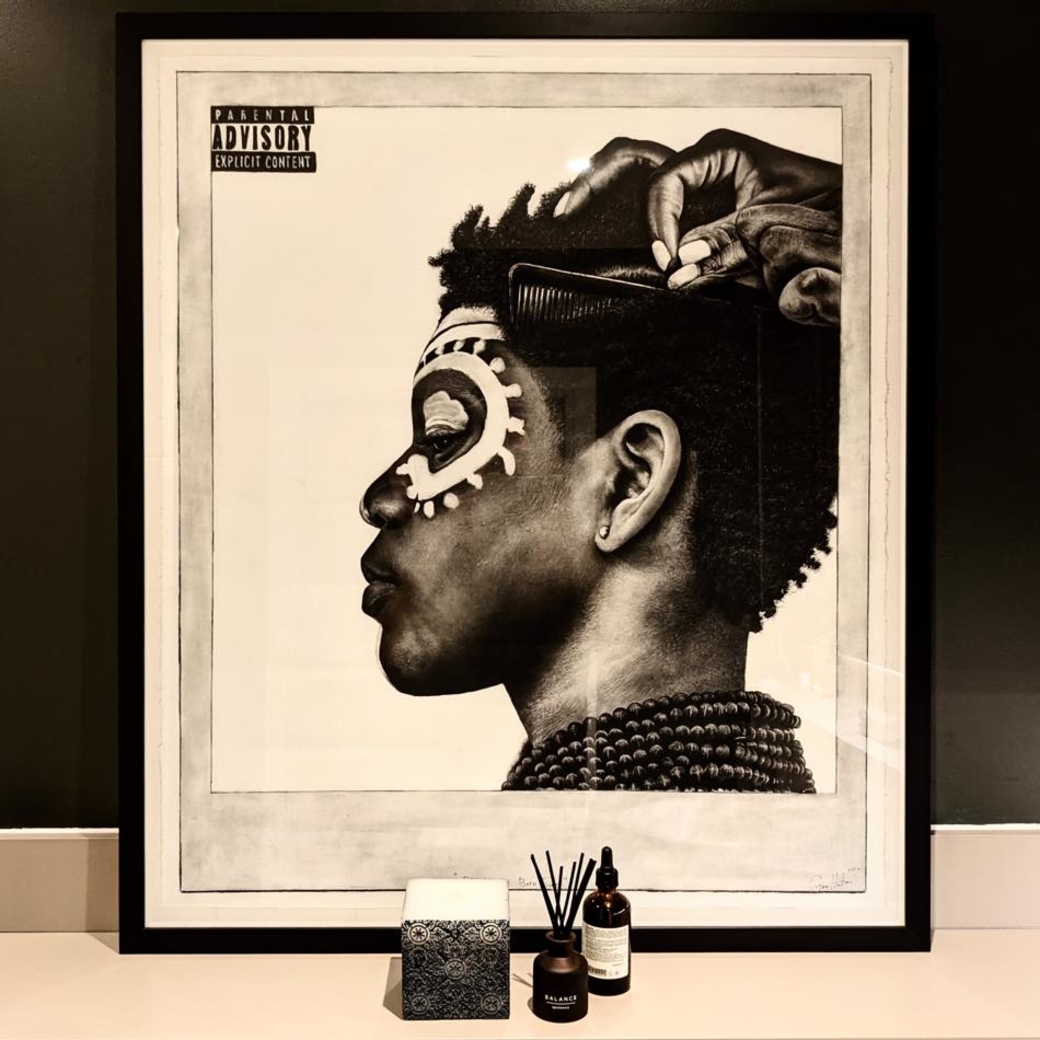
Kyle Ring's African Mask collection / A print of Gee Horton's 'Black On Both Sides'
5. Which contemporary artists and mediums are currently catching your eye?
I'm a big fan of the new generation of Black artists who are pushing the boundaries of portraiture and visual representations of Black bodies in the modern age. Some of my favorites include Toyin Ojih Odutola, Kajahl, Kehinde Wiley and Zaneli Muhole. There is a Trinidadian artist called Renluka Maharaj who works with printed portraits of indentured Indian laborers who were imported to work on sugar and cocoa plantations after the abolition of slavery in the 19th Century. She brings the black and white images to life by painting over the top of their clothing and jewelery with vivid colors and patterns with a really stunning effect. In a similar way to my work with @in.hair.itance she is able to reframe colonial images and allow us (I'm a descendant of these laborers) to appreciate them today in a different form.
6. Which direction do you expect to see the art world go in the future? Where do you want to take your work?
The future of the art world is so difficult to predict but I believe art is always at the vanguard of human thought and expression. It should encourage us to challenge cultural norms and inspire discussion and debate. I hope that the Western art world continues to evolve, moving away from tokenistic gestures to true representation and inclusion for marginalized peoples. With my own work I am keen to create and direct a photographic exhibition to explore some of the themes discussed on my @in.hair.itance account with a focus on hair diversity and expression today. I am in early talks about possible collaborations with this and will have to see how things develop. I also plan on writing a book and recently signed with a literary agent - so watch this space!
7. What's one piece of advice you would give to someone who similarly is witnessing an exclusionary space within the art world and wanting to start a dialogue?
Online spaces have really changed the way that people share creative content and often results in the organic growth of communities with shared interests. Lacking visibility or representation in artistic spaces can feel really disempowering however social media and the internet gives an alternative route to reach people. If you have the time and resources I would urge you to record a podcast, film a YouTube video or share your content on Instagram. Reach out to established institutions who may actually be really keen to work with people like you.
Selección de obras de arte
